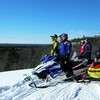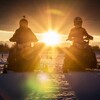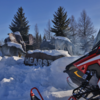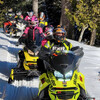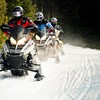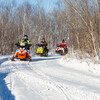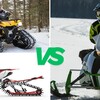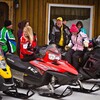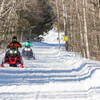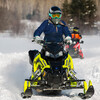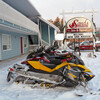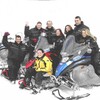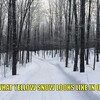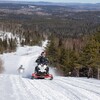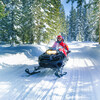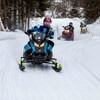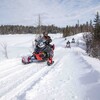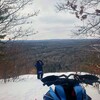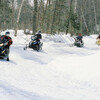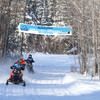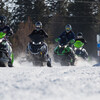
Access the Great White North: Tips and Resources for U.S. Riders
Canada, The Great White North—I know a place where in many communities winter can last for six months of the year, a place that is home to some of the friendliest people on earth, a place where winter is never cancelled and a snowmobile is the best mode of transportation between many communities.
This place is just a few hours' drive from your home state and should be on your bucket list of “I’ve snowmobiled there” destinations. In order to get you on your way I have compiled the need-to-know info with help from my good friend Ian from New York.
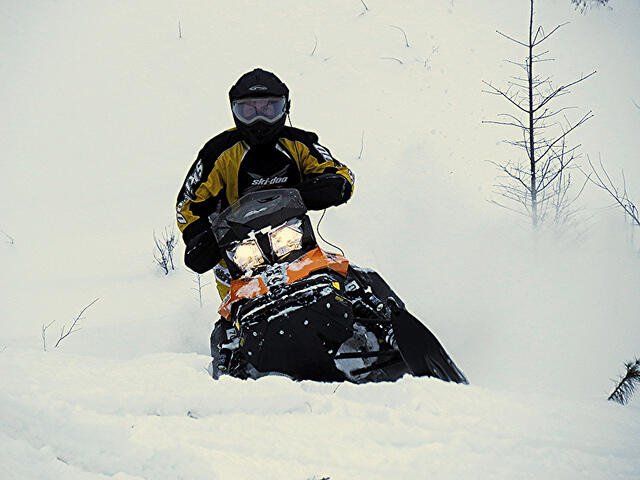
A Quick Q&A with Someone in the Know
Ian Liebmann is the owner of Monster Performance & Custom and is located in Saratoga Springs, New York. Ian makes several trips to Canada a year—both in the middle of the winter in search of the deepest and best riding and in the spring for the last rides. Ian says the “varying terrain and consistent snow depths are perfect testing ground for his suspension ideas and setups for on and off the trail” Ian has three different sleds 120 inch through 154 for testing.
Ian and I have snowmobiled many times before and in looking to plan a trip for this winter I asked him what his steps were in planning his trips.
“I watch the Government of Canada & USA weather models, I will also contact people I know who I have met through riding to get their input. Travelling all day in a snowstorm or even mixed precipitation makes a moderate trip turn into something much longer. I will change dates by a day or two to avoid any big storms while I plan to be riding. It does sound odd doesn’t it? We all pray for snow but few like to ride in a storm or even can for that matter!”
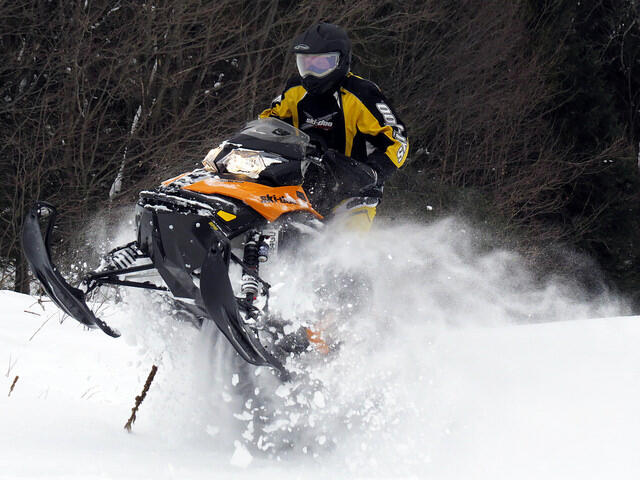
Sounds good to me, I’m always hunting for those blue bird days to ride. The weather will often determine my route and type of riding. What about the border with the truck, trailer, snowmobiles and gear, what’s that like?
“I have visited and crossed the border more than twenty-five times in the last 5 years. It's important to be honest, polite and direct. The guards are just doing their jobs. Be ready to answer any questions without hesitation. Be sure your enhanced ID or passport is in good standing. Make sure snowmobile registration, trailer registration and personal ID are IN THE TRUCK all together in a folder. Sometimes you may be required to show proof of ownership for your sled and trailer, other times it’s a 30 second conversation and you’re told to have a great trip. Don’t be alarmed if you are asked to pull to the side for a random inspection or if someone in your vehicle is flagged because of something in the past. They are not looking to “lock you up”—they just want to protect their country. I really appreciate their commitment to keep us all safe”
That doesn’t seem all that bad, I’ve never crossed to the USA to snowmobile but every experience I have ever had has been positive using the same honest strategy as you. Except for recreational boats, we Ontarians must have liability insurance on all motorized vehicles. Does this same law apply to visiting riders from outside Canada? Ian what coverage do you carry?
Yes, I have full coverage 365 days a year. By law in New York you need just basic coverage. I opt for full coverage, it isn’t that much more a year. Some other states in the USA do not require insurance, so if you’re coming from one of these states make sure you purchase a third party liability insurance policy.
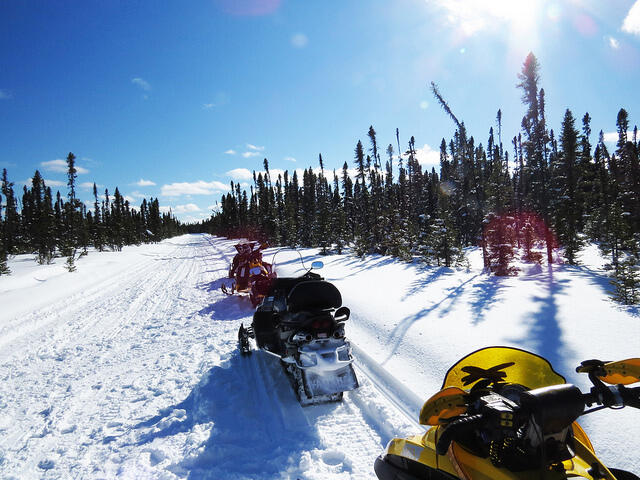
So what about money, I know when I go to the USA I tell my credit card company I am going but I also bring cash, What do you do?
I use my credit card or debit card for all gas purchases, hotels and food as it is easier however I always have Canadian currency with me just in case I am in a remote location that is cash only. I always look at the exchange rates before I travel and will make a decision on the day where I will exchange my money. If you are planning a four day trip it’s good to plan ahead with your riding friends who will pay for what, then add $100 per day for cash. Worst case is you come home with some extra Canadian money that can be used on the next trip.
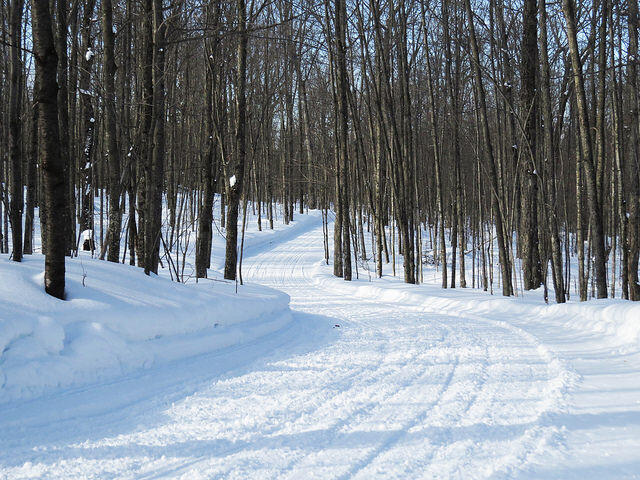
That’s some really good advice—you've set yourself up to be covered and comfortable in all situations, nothing worse than having to wash dishes for sled gas! To wrap things up, do you have any final advice to give American snowmobilers who are thinking about a Canadian snowmobile trip?
Watch the weather closely, it can turn quickly in some places. Make sure to bring extra warm clothes and gear and carry them with you. Be prepared for that unexpected breakdown or issue with a few spare parts just in case. I like to follow popular snowmobile forums for day to day trail reports from riders in the area’s I’m travelling to. It’s a good idea to either purchase a plan or turn off you cell phone so you don’t get charged with roaming fees.
Canada is a beautiful place, don’t spend all your time taking pictures, just plan a trip back to see that cool mountain view or awesome restaurant. I am in love with going to Canada to ride as it is consistent and a true sledding vacation. I do a lot of riding in Vermont, Maine and New York; these areas have good riding but none of them can compare to the consistency between club trails and the ever changing terrain in Canada.
My final piece of advice is to be polite, have fun and ride for tomorrow! See you on the snow!
Thanks Ian for your help! Check out www.monsterperf.com and like Ian on Facebook.

Quick Facts for U.S. Snowmobilers in Canada
- Unlike some US states, trails in Ontario do not “open” on a certain date. Trails opening or becoming available is determined by local clubs and can be confirmed at www.ofsc.on.ca or by visiting the interactive trail guide (green means go!) or by downloading the iSnowMobile app for your smartphone. For Quebec conditions visit www.fcmq.qc.ca/
- If you have a GPS – TrakMaps in partnership with the OFSC / FCMQ has over 50,000 miles of Canadian Snowmobile Trail mapped.
Crossing the Border into Ontario with your Snowmobile
Here is the information and contact numbers you need for any inquiries with the border agencies as well as the locations to cross into Canada either by vehicle or in some cases remote crossings via snowmobile.
Snowmobilers / visitors who are coming to Canada are allowed to temporarily import passenger and recreational vehicles for personal use. You should carry a copy of your vehicle, trailer and sled registration and proof of insurance. Be sure to check in with U.S. Customs before leaving the U.S. You must take the temporarily imported items back with you by the date you end your visit. For answers to customs inquiries or to locate your nearest customs district office, please call:
1-800-461-9999 (within Canada); or 1-204-983-3500; and 1-506-636-5064 (from outside Canada).
For more information visit: Canada Border Services Agency
For a list of specific requirements and import rules please visit the U.S. Embassy in Ottawa's website.
Border Crossings When Trailering
From Eastern New York State:
Cornwall, ON (near Massena), Prescott, ON (Ogdensburg); Gananoque, ON
From Western New York State:
Niagara Falls, ON; Queenston, ON (Lewiston); Fort Erie, ON (Buffalo, N.Y.)
From Lower Michigan:
Windsor, ON (Detroit); Sarnia, ON (Port Huron)
From Upper Michigan:
Sault Ste. Marie, ON (Sault Ste. Marie)
From Minnesota:
Fort Frances, ON (International Falls); Rainy River, ON (Baudette), Pigeon River, ON (near Grand Portage).
Border Crossings By Snowmobile
From Upper Michigan:
St. Joseph’s Island, Bruce Mines & Thessalon, ON (from DeTour Village and Drummond Island). Upon arrival, check in with Canada Customs using direct line phones provided at each crossing.
From Minnesota: Gunflint Lake, ON (from Grand Marais); from Crane Lake, MN; from Kettle Falls, MN; Fort Frances, ON(International Falls); Rainy River, ON (Baudette).
Upon arrival, check in with Canada Customs. A Remote Area Border Crossing Permit (RABC) allows you to cross at an area that does not have a customs office. It should be noted that this permit is not reciprocal with the U.S., meaning that it is issued from the Canadian Government and provides for travel into Canada, but it does not allow Canadian or U.S. citizens the right to cross from Canada into the U.S. Information and applications for the CANPASS-RABC permit are available on the government website. For more info, click here.
Recommended Articles

The Complete List of Snowmobile Events in Ontario 2025-2026
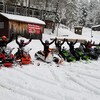
The Best Snowmobile-Friendly Lodges
Snowmobiling Winter Weather Forecast 2025-2026
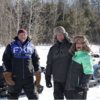
I Rode the Explorers Snow Tour in Ontario and Here’s What It Was Like

Why Ontario is One of the Best Snowmobile Destinations in the World
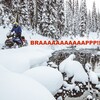
11 TikToks That Prove Ontario is the Best Place To Go Snowmobiling

5 Weekend Snowmobile Getaways Near the GTA
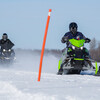
31 Ways To Get In The Know About Snowmobile Trail Riding in Ontario
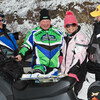
A Beginner's Guide to Snowmobile Lingo

